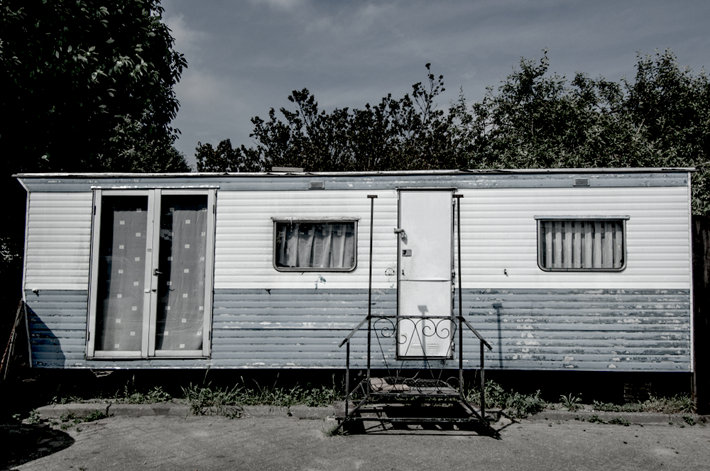The Tyranny of Hopelessness
“There is a lot of suffering in the world. There is also a lot of overcoming it.”
—Helen Keller

Four days before Christmas, I came to Paradise, California, a little hamlet in the Sierra-Nevada foothills. I was hired by the well-to-do parents of a 32-year old addict who would fly into a rage every time they mentioned he needed to go to a treatment program.
His father was a well-respected emergency room doctor, his mother was a homemaker. Both were devout Christians. Despite being well-educated, sympathetic, affluent and having provided a good home, their beloved and only child was slowly killing himself, shooting black-tar heroin and Oxycontin.
Even though he continually rebuffed them, they refused to stop trying to help their son, Andy. They had called me in a state of panic after finding him slumped over the toilet, a hypodermic needle still in his arm. Today Andy and I are on our way to Narconon.
Four days earlier…
The day I arrived the air was clean and cool, bellying the storm I came here to help the family face. Andy had “stolen” his mother’s car and had been MIA for two days. An intervention isn’t much good without an addict to intervene upon, and Andy with a car spelled trouble.
Peter, Andy’s father, and I drove around all night, searching every haunt, street corner and drug den Andy might be at. Luckily, Paradise is a relatively small town and after a few hours, we found the minivan we were looking for parked next to a small, blue mobile home where one of Andy’s known connections lived—an ex-con whom Peter said was currently on parole. Peter stuck in the extra key he’d brought with him and peeled out of the driveway in the dark of night.

When it comes to addicts with cars, my opinion is—it’s more important to safeguard mankind and you might have to place the intervention second. You do not want the addict crashing the car, and harming himself or anyone else. Sometimes, though, the two things—safety and strategy—can be accomplished at the same time. Luckily, this was one of those cases.
Andy was using heroin and Oxycontin and his parents had no idea what else. Whenever he needed food or clothing, he would rage into his parent’s home, grab what he needed and then curse his parents or bellow his numerous complaints, keeping his parents on pins and needles. He supplemented his verbal abuses via text every chance he got.
His mother showed me a few of his texts and they were abusive and nasty. She was beside herself, unable to understand why he treated her so hatefully.
His tirades were directed especially toward her and this is often the case. As the addict spirals downward, it is the mother who receives the brunt of his rage and hostility.
This may be a way for the addict to get his loved ones to treat him the way he feels he deserves to be treated. In any case, it is almost always true that the person who is closest to the addict receives the worst treatment. And, this much I know, both as an interventionist and a former addict: it is not hate, even though it looks like it. It is more a manifestation of self-loathing projected upon another. So, if you’re the person on the receiving end, don’t misunderstand it. One day when your loved one is back to himself again he will say his apologies for his treatment of you, as I did with my family.
At one point Andy’s parents became totally fed up with Andy’s seemingly endless condition, so much so that they almost closed the file on the possibility of an intervention. But, the faint light of hope still flickered in their hearts and, together, we made some headway.
Only two hours away, my own family was about to sit down to a Christmas Eve Luau and I could think of many delicious reasons to be there instead of in a motel room, listening to the rain, eating re-heated chicken and rice. But one glaring fact confronted me; Andy, the person I was here to help, was withdrawing—quite miserably I was sure—in a house that was not his, without any family, with no gifts to open, no lighted tree, no car to drive (not anymore!), no money, no job, and no apparent way out of the enormous mess that was his life. Having lived it myself for two decades, I know addiction—both the love affair with drugs and the complete destruction which accompanies it. If I could wrench Andy out of this mess I knew in my heart he might actually become a formidable force for good. But he had to get back to living life again.

What Andy was doing with all the hostility directed toward his mother and father was nothing new; actively-using addicts and alcoholics consciously but more often subconsciously, attempt to destroy interventions by creating feelings of hopelessness in those around them, especially in those closest to them. It is a simple yet powerful mechanism, not difficult to observe, and Andy was no exception. At any mention of treatment, he would blast back,
"I'll NEVER go to treatment!!!"
"I'm going to KILL myself if you make me go!!"
"I can do it on MY OWN!"
"I have THINGS TO DO!!!"
"I would have gone but now you've messed it up by making my life HELL by making it all about this STUPID program!"
"If you make me go I'll just leave once I get there!!" … ad nauseam.
Every one of these statements and its manner of delivery had a dual purpose: to avoid going to treatment, and to make those who are trying to help him go away or give up—to create hopelessness.
The entrenched addict wants to make his family feel wrong for trying to help. Word by word, crisis by crisis, explosion by explosion, the practicing addict makes his loved ones feel wrong. Wrong. WRONG for having the audacity, the nerve, of having any hope at all.
The tyranny of hopelessness is tough to overcome and because of it, many families give up. But if the family gives up, it cannot succeed. The addict “wins” and then, dies in some way. He falls away from life until he is gone completely. But he can be rescued. These are the only two possibilities and the choice is clear.
An experienced interventionist can help guide your family through the chaos of addiction and see that you can make it all the way through. What you need to do is to recognize chaos and hostility for what they are: control mechanisms. Nothing more. A way for the addict to keep those who love him paralyzed in fear and hopelessness.
If this applies to your family or to an addict you know, you must detach yourself from it and look in on it from the outside. If you were to see an addict treat his family in a hostile and abusive way, what would you think? You would know you were seeing a person controlling those around him with hostility, driving them into fear, apathy and hopelessness.
Addicts do this to stop efforts to help them. If your purpose is to help the addict in your life, see the hostility for what it is. Keep moving forward with the intervention despite his efforts to the contrary. In all my years of doing interventions, perseverance despite whatever is taking place is the most important ingredient to success.
(To preserve privacy, names have been changed and the photos do not show the people featured.)


 ®
®